05/18/22
Watch the 2022 Western Prosperity Roundtable Forum

The 2022 forum for the Western Prosperity Roundtable is being hosted by Oklahoma Gov. Kevin Stitt on May 17 and 18 at the 21c Museum Hotel Oklahoma City. You can watch recordings of the event by clicking on the links below.
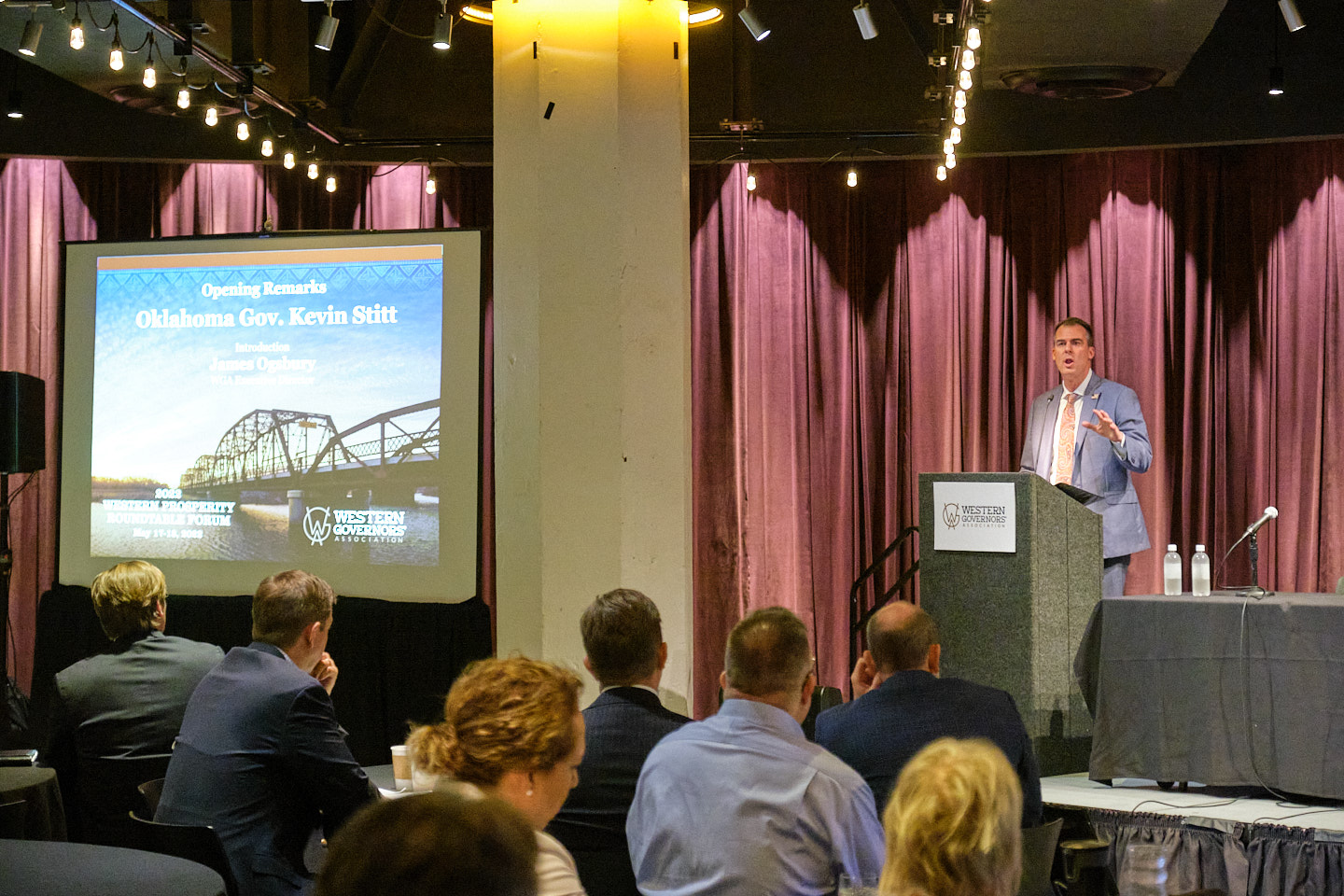
Oklahoma Gov. Kevin Stitt opened the 2022 Western Prosperity Roundtable by touting the recent growth of his state’s economy and highlighting the significant opportunities throughout the region to continue this growth, including manufacturing electric vehicles, producing hydrogen fuel, securing a domestic supply of critical minerals and expanding access to broadband.
“Everybody wants the best opportunity for wage growth, everybody wants the best opportunity for our kids coming out of college,” he said. “So, we’re pushing economic development and getting our economy going… it helps education, it helps infrastructure, it helps health care.”
Day One of the two-day event also featured roundtable discussions about state strategies for effectively implementing the recent influx of federal funding, the development of programs that ensure those resources are equitably allocated in rural and underserved communities and processes to help those communities apply for and secure the competitive grants outlined in the Infrastructure Investment and Jobs Act.
Day Two featured a conversation between Gov. Stitt and Xochitl Torres Small, the Under Secretary for Rural Development at the USDA, about the department’s efforts to support rural economic development. Regional experts were also convened for roundtable discussions on broadband expansion, new energy technology and modernizing rural economies.
You can watch a recording of each session by clicking on the links below or by visiting WGA's YouTube Channel and Facebook page.
MAY 17 (Day One)
Opening Remarks from Oklahoma Gov. Kevin Stitt
Roundtable 1: State Perspectives on Infrastructure Implementation
The recent influx of federal funds for economic recovery and infrastructure has provided states an opportunity to implement long-needed upgrades and make transformative investments in their communities. This panel discussed how western states are dealing with the scale of available resources and maximizing local investments.
Rob Creager, Senior Policy Advisor with the Office of Wyoming Governor Mark Gordon:
“When you look at the competitive opportunities (within the Infrastructure Investment and Jobs Act) around energy, broadband, etc, it’s going to spur economic development in Wyoming and the West for decades to come,” he said. “It would be a disaster if we didn’t staff up and get ready for all these opportunities that are in front of us.”
Leah Horner, Infrastructure and Regional Solutions Director with the Office of Oregon Governor Kate Brown:
“The funds [within Infrastructure Investment and Jobs Act] will be more successful if you have a regional approach, so we’ve been poking our heads out and saying what are other states doing and why can’t we do that,” she said. “So we’re leaning into some of those unique opportunities that I don’t think we would have explored otherwise.”
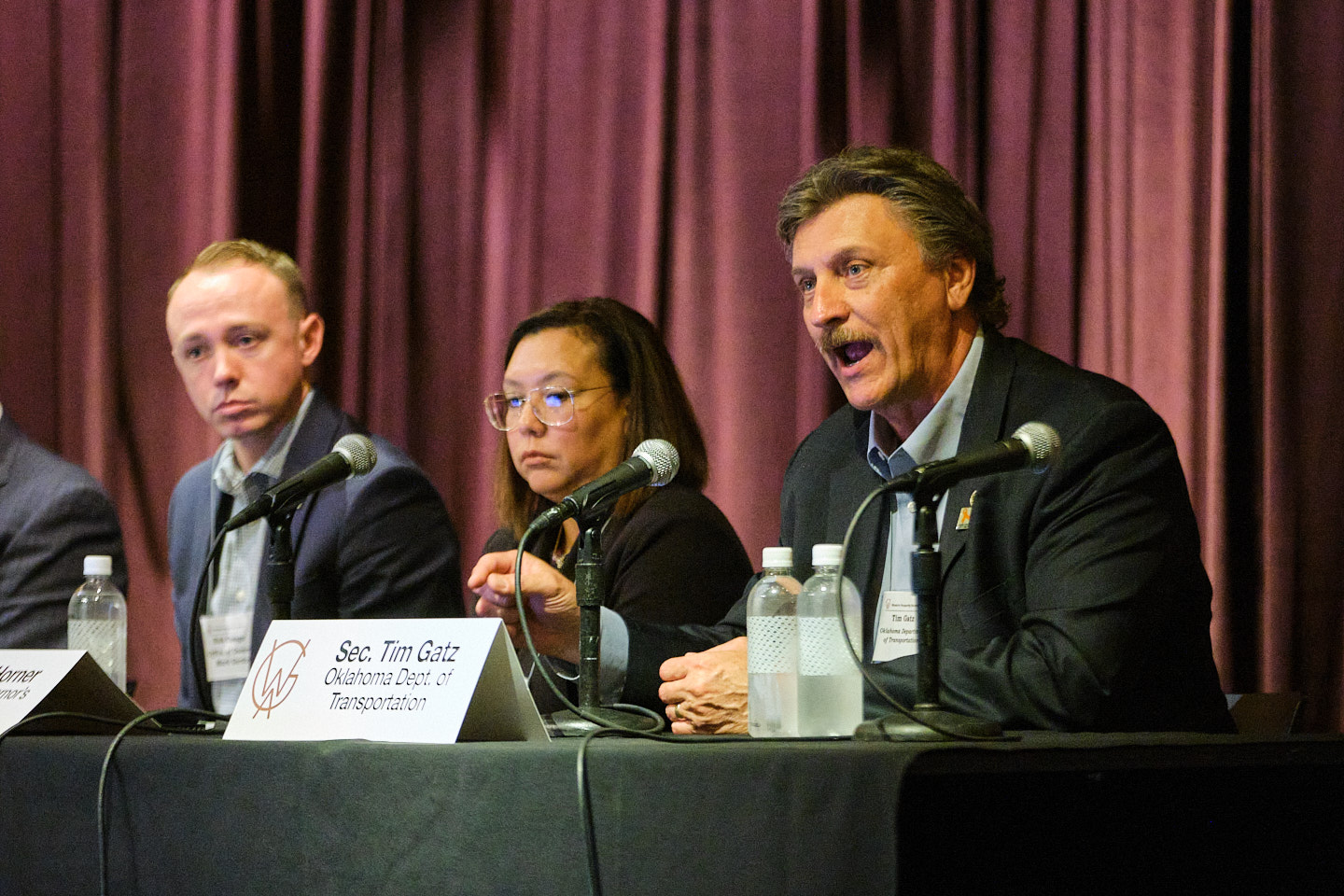 Tim Gatz, Secretary of the Oklahoma Department of Transportation:
Tim Gatz, Secretary of the Oklahoma Department of Transportation:
“There are tremendous opportunities (with the Infrastructure Investment and Jobs Act) to work state-to-state,” he said. “I have people in support roles that are all about it. We’re ready to get this done, we’re ready to work with every partner be that a government partner, be that a private sector partner and we’re going leave the country and the state of Oklahoma better than we found it.”
Roundtable 2: Eligibility and Equitable Access
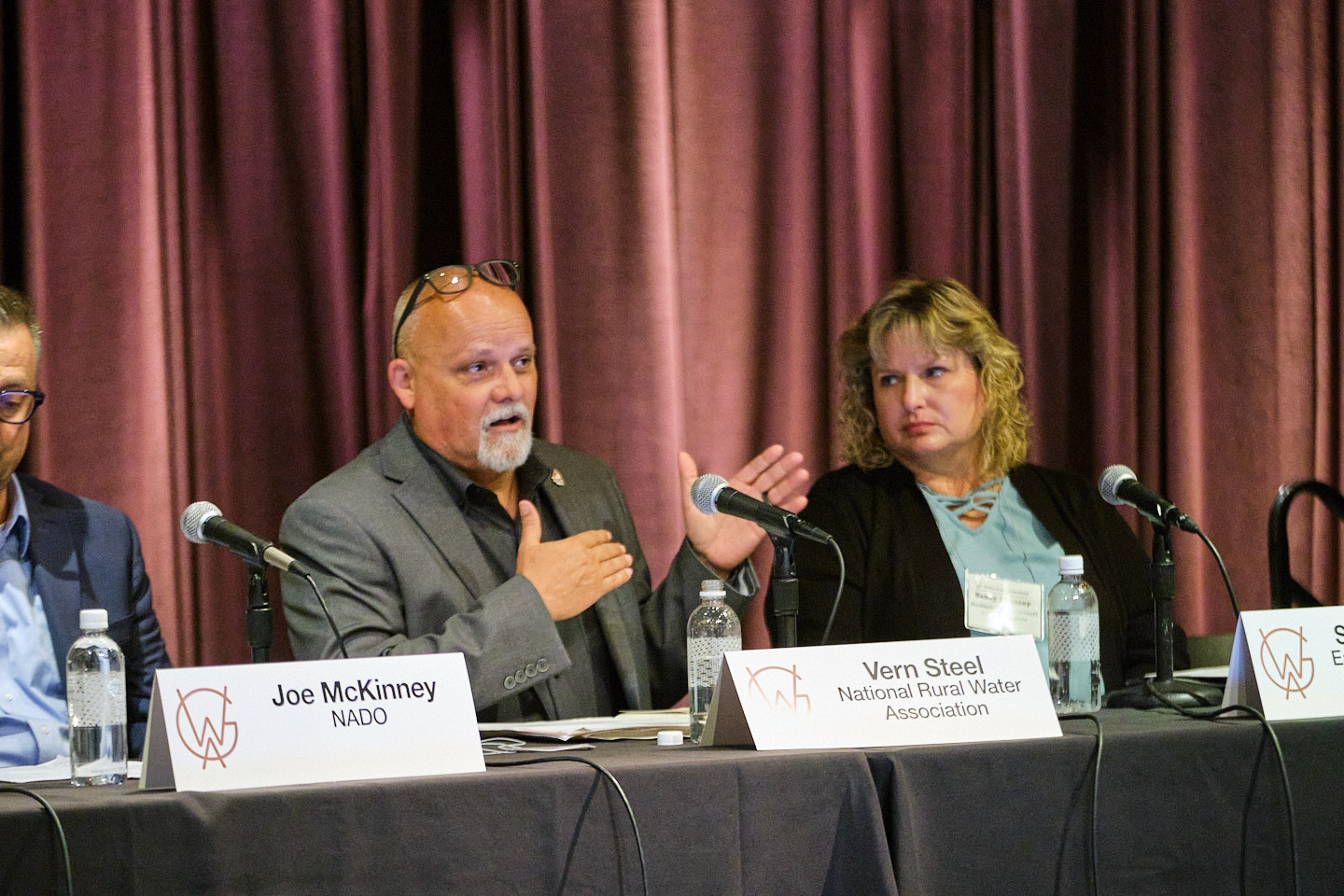 Federal programs do not always translate well to western states where infrastructure and economic development challenges present distinct challenges. Panelists on this roundtable discussed how these differences affect access to resources for rural and underserved communities and how federal agencies can design infrastructure programs to be equitable in the West.
Federal programs do not always translate well to western states where infrastructure and economic development challenges present distinct challenges. Panelists on this roundtable discussed how these differences affect access to resources for rural and underserved communities and how federal agencies can design infrastructure programs to be equitable in the West.
Joe McKinney, Executive Director, National Association of Development Organizations:
“If this influx of dollars is going to be successful, it’s got to include rural America,” he said. “You can put out all the money you want to, but unless there’s a way to access those funds on a rural level then the playing field is just going to get more unequal."
Sandy Chancey, Executive Director, Eastern Plains Council of Governments:
“I’ve spent 28 years chasing grant monies and funding for infrastructure projects, and the smaller the community the harder it is,” she said. “[Policymakers] make these programs and they make these rules to go with the programs, but they’ve never actually lived [the rural life], so sometimes it’s the square peg in the round hole scenario. Yes, the money’s there, the program exists, but it is not a fit for that small community.”
Vern Steel, Deputy CEO, National Rural Water Association:
“We can’t afford to lose our rural identity. That’s what this country was built on,” he said. The shot in the arm [from the Infrastructure Investment and Jobs Act] is great but it’s important to keep it going.”
Roundtable 3: Supporting Transformational Investment at the Local Level
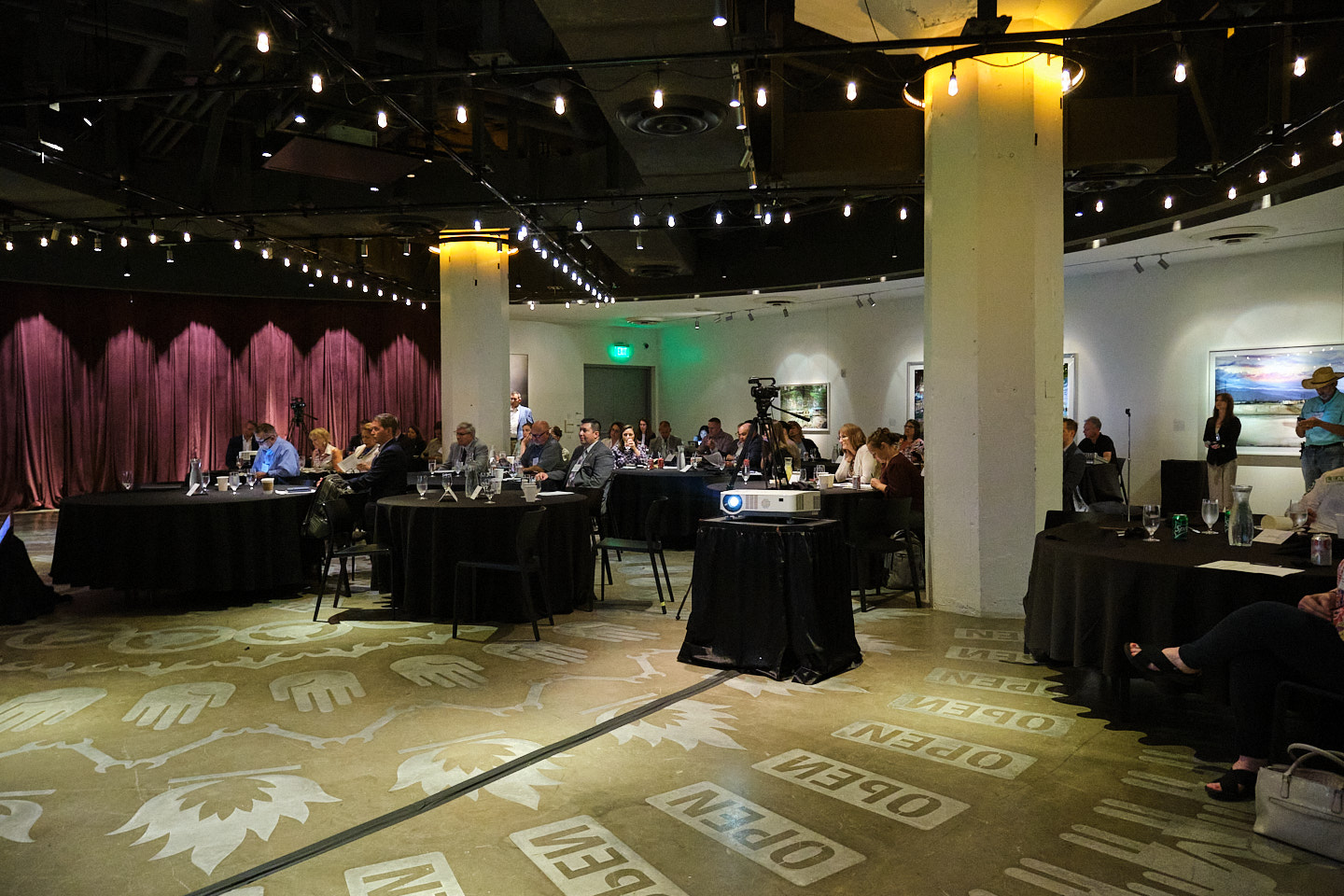 The substantial increase in funding for existing federal programs, along with the creation of entirely new programs meant to assist rural and distressed communities, has added additional complexity for local leaders in navigating federal resources. This panel examined the challenges that rural and distressed communities face in accessing and managing these critical funding opportunities, including navigation of application processes matching fund requirements and other demands.
The substantial increase in funding for existing federal programs, along with the creation of entirely new programs meant to assist rural and distressed communities, has added additional complexity for local leaders in navigating federal resources. This panel examined the challenges that rural and distressed communities face in accessing and managing these critical funding opportunities, including navigation of application processes matching fund requirements and other demands.
Rod Cleveland, Commissioner, Cleveland County, Oklahoma:
“Counties now have a lot of money and they’re working on trying to prioritize the best and most efficient way to spend that money without creating new programs that are going to be a budget buster in two or three years.”
Travis Kyhl, Executive Director, Six County Association of Governments:
“With how small and rural we are, a lot of these federal programs require a 20% match, which quite literally we just can’t do,” he said. “I think there are ways you can remove the match requirement and still ensure you still have good quality projects by using an agency like ours to vet those projects.”
Olga Morales, Assistant Director, Community & Environmental Services, Rural Community Assistance Corporation:
“The implementation capacity is just not there,” she said. “About two years ago New Mexico went through the process of losing about $2 billion of funding that had not been implemented because there wasn’t project management capacity. When it comes to small communities that don’t have the capacity to advance these projects [within the Infrastructure Investment and Jobs Act], five years from now we’re going to be up against the same crisis.”
Chantal Unfug, Director, Division of Local Government, Colorado Department of Local Affairs:
“I think we should all be questioning the premise of the match today,” she said. “Especially in this context of rural communities, we’re matching them to death. They can’t do it.”
MAY 18 (Day Two)
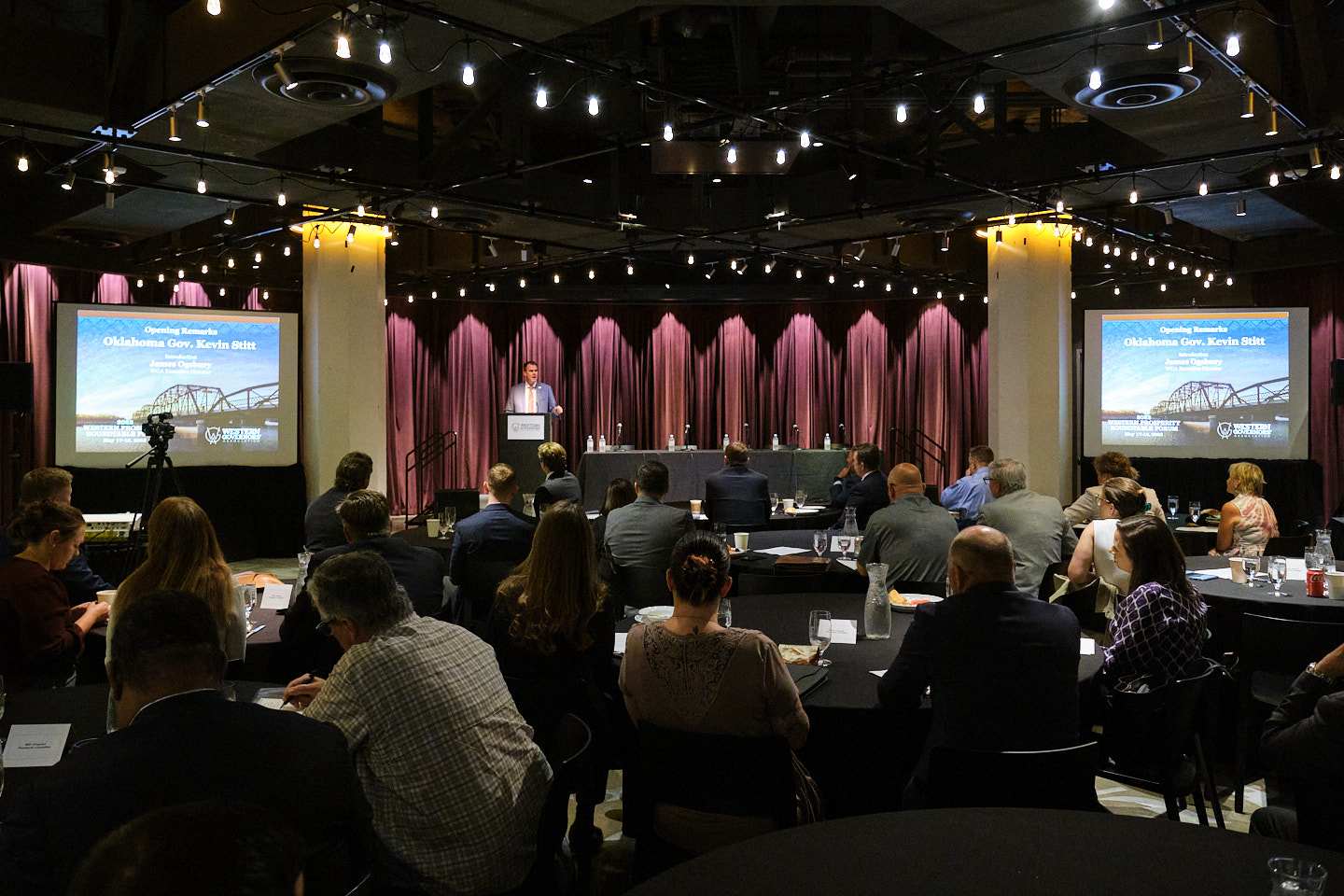 A Conversation on Expanding Rural Prosperity
A Conversation on Expanding Rural Prosperity
Oklahoma Governor Kevin Stitt and Xochitl Torres Small, the Under Secretary for Rural Development at the USDA, discussed prosperity and economic opportunity in the rural West, including USDA’s efforts to improve service and strengthen support for community-driven solutions.
Xochitl Torres Small, Under Secretary for Rural Development at USDA:
“[USDA] Rural Development has 47 programs… and that means it can sometimes feel a little bit like a bank – like you’ve got to go in and put on your best suit and justify why you deserve that loan or grant,” she said. “We want to be more like a neighbor, saying ‘oh, I see this project that you’re working on, do you want to borrow any of our tools.”
Roundtable 4: Investing in Broadband
The Infrastructure Investment and Jobs Act made a historic $65 billion investment in broadband to help close this digital divide, creating new broadband programs and increasing funding for existing efforts. This panel examined the challenges and opportunities for states and stakeholders in leveraging these funding streams and addressing broadband infrastructure gaps.
Eric Forsch, Broadband Development Manager, Idaho Department of Commerce:
“Building the infrastructure is one thing,” he said. “The second step beyond that is are people going to use and then do they know how to use is… so you’ve got to be realistic about and understand the digital equity component on the digital education side of things.”
Steven Harpe, Chief Operating Officer, State of Oklahoma:
“The same type of data that you’d want on someone before you give them a $10 million slice of a grant program,” he said, “is basically the same type of information you might want if you’re getting ready to buy or acquire them.”
Nicholas Alexander, Senior Telecommunications Policy Specialist, Office of Internet Connectivity and Growth, National Telecommunications and Information Administration:
“It is incumbent upon us at the federal level to ensure that these funds are used to supplement not supplant,” he said. “States should be thinking about how to strategically ensure that all of the unserved and underserved locations within their jurisdictions are going to be addressed.”
Jake Varn, Principal Associate, Broadband Access Initiative, The Pew Charitable Trusts.
“It’s no easy task to think about braiding (various sources of federal funding for one project), but it can definitely be very advantageous to be thinking about it,” he said.
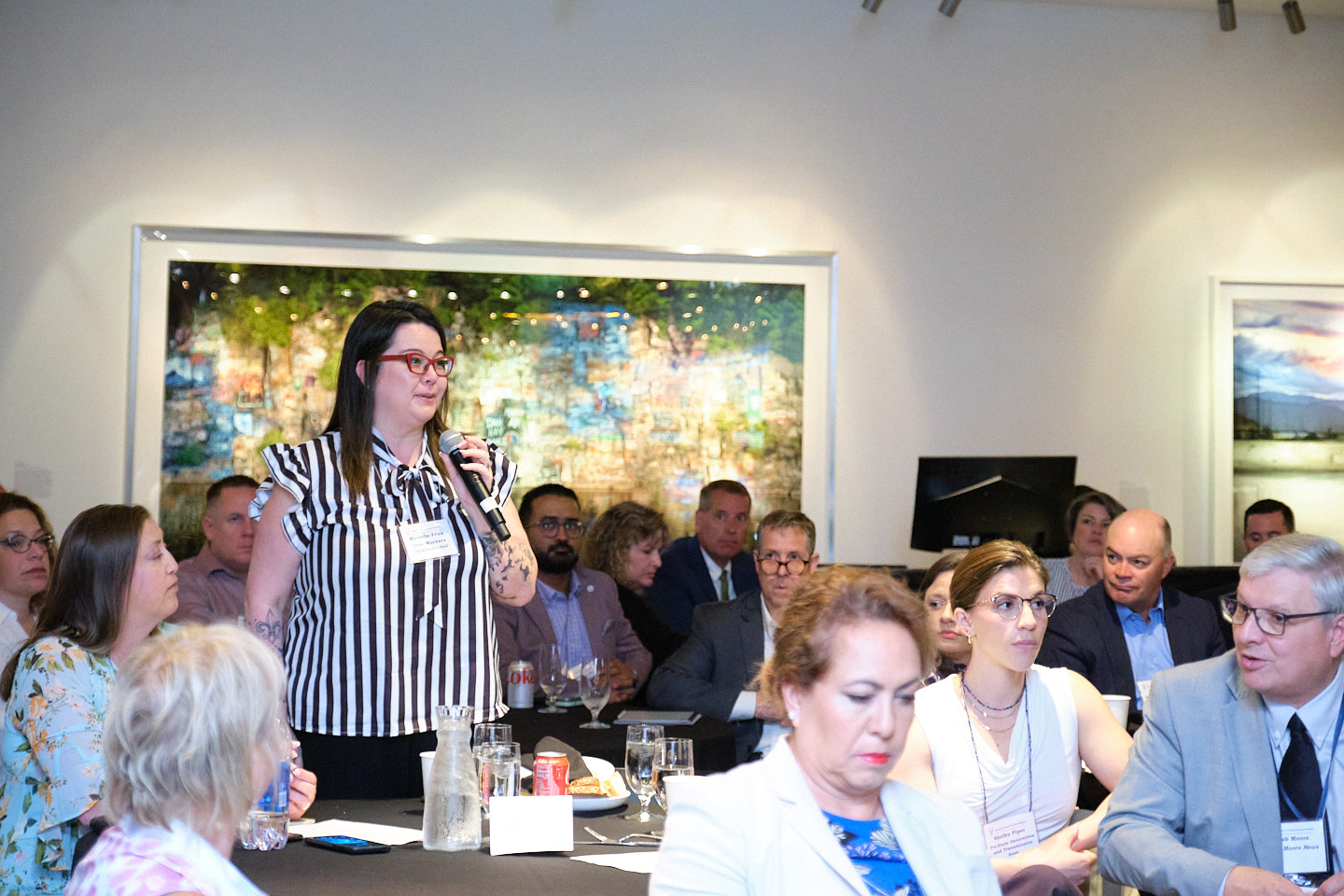 Roundtable 5: Energy Communities in the West
Roundtable 5: Energy Communities in the West
The development and expansion of new energy technologies, such as hydrogen fuel and carbon capture and storage, could spur economic growth and diversification in western states and rural communities with existing energy assets. This panel discussed state strategies to deploy advanced energy technologies, leverage new federal funding opportunities and support rural communities and workers affected by the energy transition.
Matt Fry, Senior Policy Manager, Carbon Management, Great Plains Institute:
“Hydrogen will be one of the primary drivers in our opportunities to move forward in the carbon-free industry,” he said.
Secretary Kenneth Wagner, Oklahoma Office of the Secretary of Energy and Environment:
“We don’t need to get into arguments about man-made climate change,” he said. “The energy transition is being driven by consumers and investors and the market tells us they want more sources of low and no carbon energy.”
Glen Murrell, Executive Director, Wyoming Energy Authority
“How important is CCUS [Carbon Capture Utilization and Storage]? It's the kernel technology that we have to solve today – tomorrow’s too late, we have to get that deployed at scale as soon as we possibly can,” he said.
Roundtable 6: Modernizing Rural Economic Development
This panel explored how rural economic development practices have evolved to keep pace with current economic realities and trends. Panelists discussed how states, local governments, USDA Rural Development and the Economic Development Administration are implementing changes to better meet the needs of rural communities and what additional tools or changes could further encourage equitable economic growth.
Blayne Arthur, Oklahoma Department of Agriculture, Food and Forestry:
“I believe that food security is national security,” she said. “So, the more we can do to bolster our rural economies and have that food supply chain sturdy, and where we need it, will be a benefit to all of us.”
Apurva Naik, Economic Development Integrator, U.S. Economic Development Administration:
“The federal government as a whole has traditionally done a bad job ensuring that our funding is equally distributed, that's the bad news,” he said. “The good news is that across federal board agencies, and at the EDA especially, have really taken steps to correct that.”
Stephen Lisonbee, Senior Advisor for Rural Affairs, Office of Utah Governor Spencer Cox:
“There are these learning opportunities about how you leverage the regional entities that have the capacity to support the smaller ones," he said. "That’s a learning process, but that’s what we have to do... Let’s find the right partner. Let’s fill that void.
Maria Effertz Hanson, Director, Division of Community Services, North Dakota Department of Commerce:
"Get together and figure out how you're going to get out there and use these dollars," she said. "Almost everything I've seen coming down the pike is regional in approach."